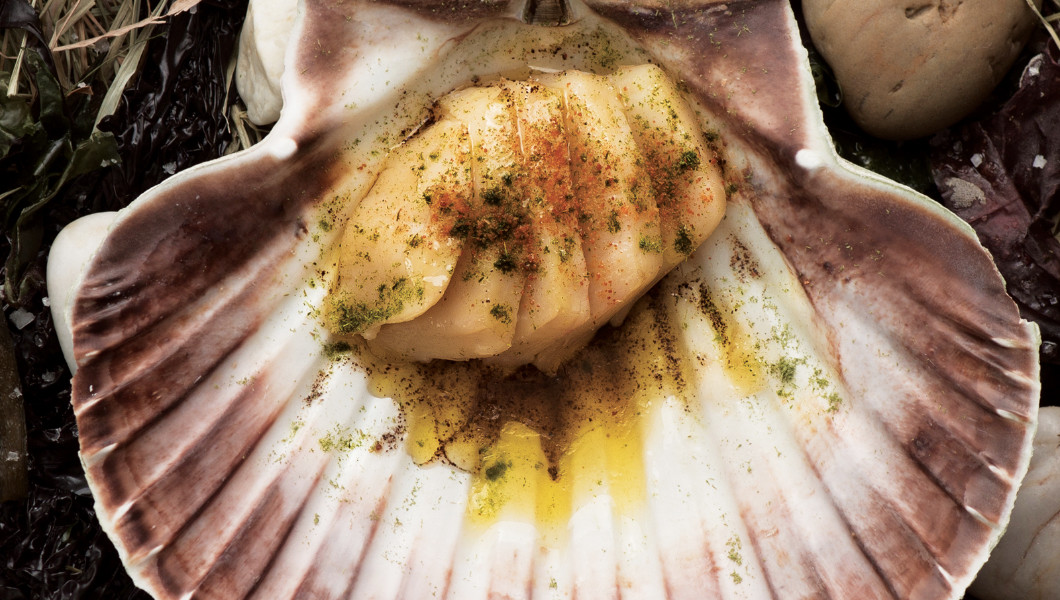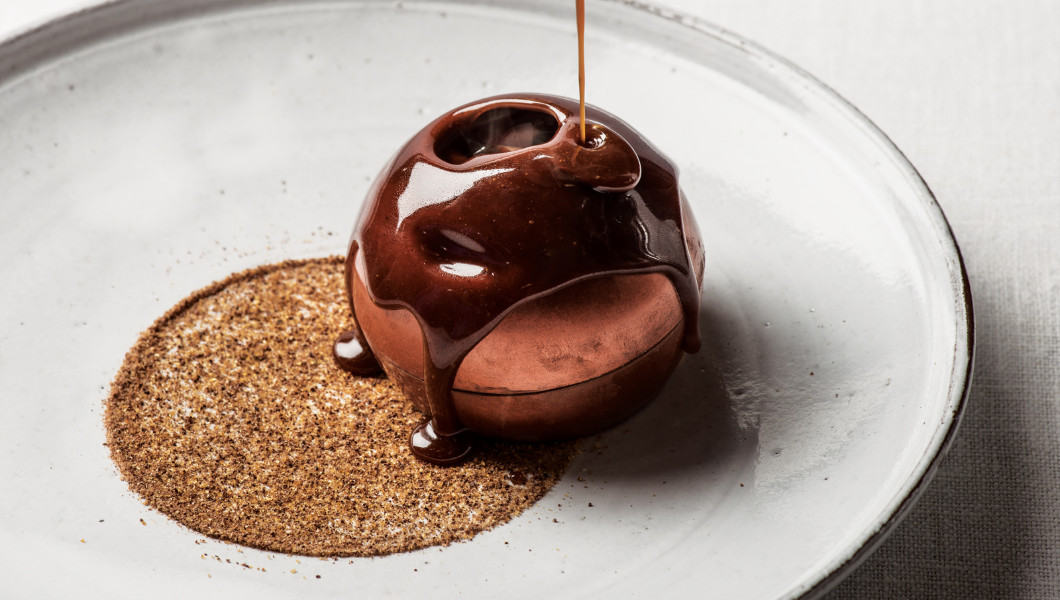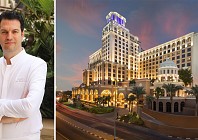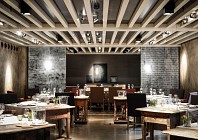As one of Scandinavia’s most renowned chefs, Michelin-starred chef Björn Frantzén is at the top of his game, winning hearts (and tastebuds) around the world for his innovative cooking, creative techniques and traditional preservation methods, as well as his tendency to champion lesser-known (and often controversial) ingredients. Frantzén founded his Stockholm-based Restaurant Frantzén in 2008, which earned its prestigious two stars after only two years in operation and is now ranked at number 31 in the World’s 50 Best Restaurants.
But that was just the start for the dedicated chef, who has since introduced Swedes to British pub cuisine with his gastropub concept, The Flying Elk, and spearheaded a movement to educate farmers in his native homeland. In Dubai for the next three months as the second act in Enigma’s “The Untold Story”, Frantzén’s pop-up restaurant concept, “The Journey of a Nordic Chef”, will bring the first taste of fine-dining Nordic cuisine to Dubai.
How did you feel when you were asked to do Enigma?
It was great. Obviously this project is a crazy one, but I’m pretty lucky because I’m going to set up a permanent restaurant here in Dubai in November in d3 [Dubai Design District], so it was good timing. We have some really strong members of my team here.
Can you share any details about the new d3 restaurant?
It’s going to be my take on a Nordic luxury brasserie called Frantzén Kitchen in a wonderful space in d3. Next to us will be Masa [Takayama] from New York and I think Jean-Georges [Vongerichten] is doing something next to it. There will be plenty of fish and seafood on the menu, because that’s big in Sweden, and some classic Swedish dishes. Not fine dining, more fun dining. Like La Petite Maison or La Serre but with a Swedish touch.
What inspired you to launch a restaurant here?
There are more than 6,000 Scandinavians living in Dubai and it’s constantly growing. Nowadays Emirates flies straight from Stockholm to Dubai and it’s a five-and-a-half hour flight so it’s become one of the most popular tourist destinations for Swedes. The British people love to go to pubs while they are in Spain and the French like to go to their brasseries. The Swedes are the same: they like to eat meatballs when they are away.

Scallop in its own shell served with dried roe, fir tree, finger lime & dashi
You were a cook in the Swedish army – what was it like?
I must have been 19 or 20 and back then it was obligatory to do army service. I ended up in the northern part of Lapland, which is a special place in the world. It’s far, far up, close to the border of Russia. In the winter, the coldest day was minus 38.2 Celsius. I had a good time. I spent most of my time out in the field, in the forest.You are training; you are playing war and sometimes you are out for a month living in tents.
Were your fellow army mates appreciative of your cooking?
[Laughs.] I was more judged as a military person than a cook; the cooking was a small part. But the guys needed to eat and someone needed to cook, and it was me. It was more cooking to survive than cooking to push gastronomic borders.
You’ve described your cuisine as Nordic-kaiseki – what is it about Japanese cuisine that appeals to you?
I think cooks around the world have a lot to learn from the Japanese. In Japan, you don’t just open up a restaurant; you are devoted to pure ingredients and cooking technique. The Japanese are so very good at what they do; they are very demanding of themselves and are extremely dedicated, and they have such strong traditions, especially kaiseki. Nordic gastronomy is also very ingredient driven and there are a lot of similarities, like fermenting and pickling. It’s very easy to match the two.
Can you tell us about the project you founded, Exceptionell Råvara (exceptional ingredients)?
It started almost four years ago because the restaurant scene in Sweden had boomed and the top restaurants had become so much better, but unfortunately the farmers had not progressed in the same way. It was to bring the farmers on board, to say: “Hey we don’t have any good chickens in this country, we need to buy them from France – it’s not acceptable anymore, are you with us?” So now four years down the line we have some really beautiful Swedish chickens that are better than the French ones, and really good beef. A lot of things have improved. There are about 200 farmers and about 50 chefs. It’s growing and growing all the time.

You also have two farmers working solely for Restaurant Frantzén – what do you grow?
Both are solely for vegetables. One is a summer garden, and one is a winter garden. I would say we are 99 percent self-sufficient all year round. Everything grows well but the seasons are shorter; half the year it’s winter and if you are lucky, there is one or two hours of sunshine. The rest of the time it’s darkness, so that really affects things but it also gives you an opportunity. Imagine the sweetness of berries that get 22 hours of sunlight in summer.
Did you always have a green thumb?
I learned a lot about it when I worked with Alain Passard [of three Michelin-starred restaurant L’Arpège in Paris]. He has four gardens. He went all-veggie when I was there and that really opened up my eyes. The star of the show doesn’t have to be a beef fillet. It can be a carrot if you do things correctly.
And one of your signatures is actually entirely vegetable based, satio tempestas (satisfaction of the season)?
It’s basically made up of all vegetables from the garden. That’s the only dish that is always on the menu at Restaurant Frantzén, and is the only dish that also changes every day.
Can you talk us through one of your more controversial ingredients: dried reindeer penis?
One of our farmers had it and dried it. It was almost like beef jerky, but I found that a bit bizarre so we kept on driving [how to use] it a bit further. There is so much more to the animal than just the prime cuts and this was a way of waking that discussion. We will probably have some reindeer [on the menu in Dubai].
You also use quite a lot of horsemeat – will that appear on the menu too?
We won’t do horse here, but it’s also one of those things that we want to talk about. In many countries, they slaughter horses and no one wants to use them so they make these big graves and bury them in the earth, in soil, which is not good. It’s like elk and game, it’s very low on fat so cooking it is difficult but it works absolutely brilliantly served raw either as carpaccio or tartare and so on; you just have to bring the fattiness from somewhere else, with a cèpes mayonnaise or something like that.
You also work with The Swedish Child Diabetes Foundation – why is this so close to your heart?
My youngest daughter got diabetes two years ago when she was three. That was, to be honest, a nightmare, and still is. It changed our life in a big way. It’s very tough. You have to be alert 24/7. It’s very rare that you actually sleep a whole night. In October, I invite different chef friends from around the world to cook at my restaurant – last year I think we had 12 or 14 Michelin stars altogether. No one gets paid and we sell the 22 seats for €1,000 (US$1,123) each. All the money goes to the foundation. It’s not just about the money; it’s about raising the awareness of the disease.

Smoked ice cream, roasted nuts, tar syrup & salted fudge with cloves
How has it affected your day-to-day life?
You can make a big difference by not eating white flour and taking away all the sugar. But she is five, so you have to find sweetness from other sources like stevia plant, agave syrup or date syrup. You can just imagine all the birthday parties she’s invited to at kindergarten and the parents have no idea. My wife and I are working on a diabetes cookbook that will come out next year. A lot of people who have diabetes – especially parents – feel lost. I’m lucky because I’m a chef and my wife is studying to become a health professor, but imagine someone who is not in the industry? It must be so hard.
What can we expect at “The Journey of a Nordic Chef”?
Most of the ingredients will be flown in from Sweden. Some menu items aren’t decided yet because we want to see the quality of ingredients here. It’s a challenge. We’re in the middle of the desert. But it’s going to be good fun. For me, it’s not just about the food; it’s about the whole energy and the atmosphere. A lot of fine-dining restaurants get so stiff and boring; it’s like going to a library – I hate that. I love the vibe of a full restaurant but with kick-ass food. It will be very relaxed with loud music, not fine dining where people are whispering to each other – no way José – I’m not having that.










